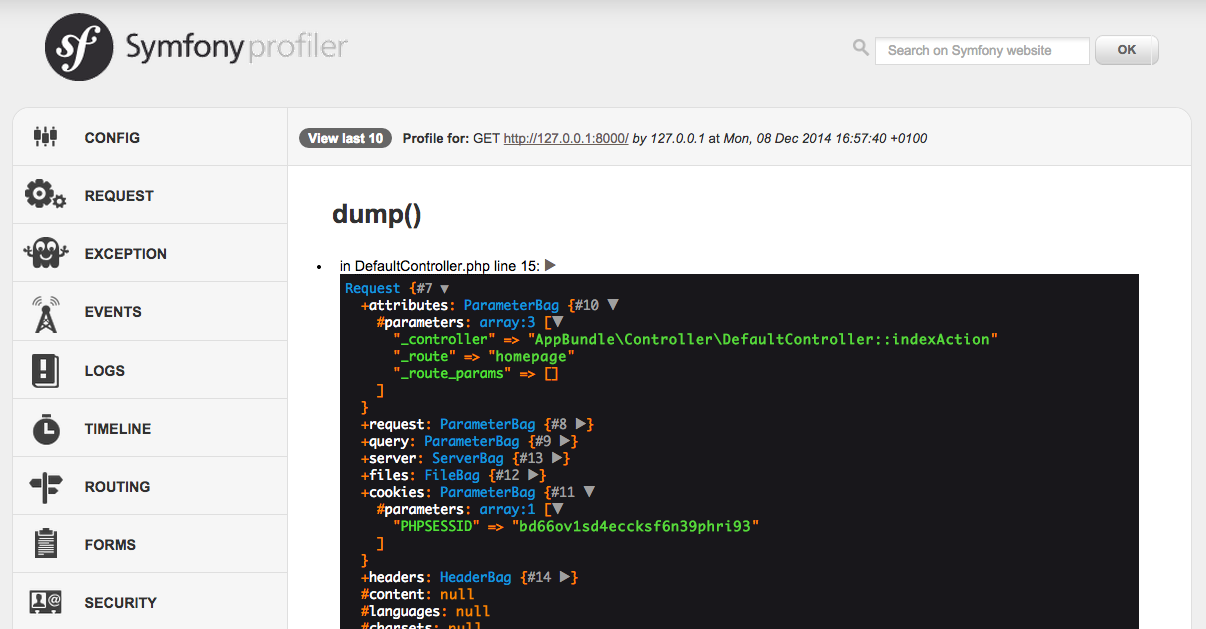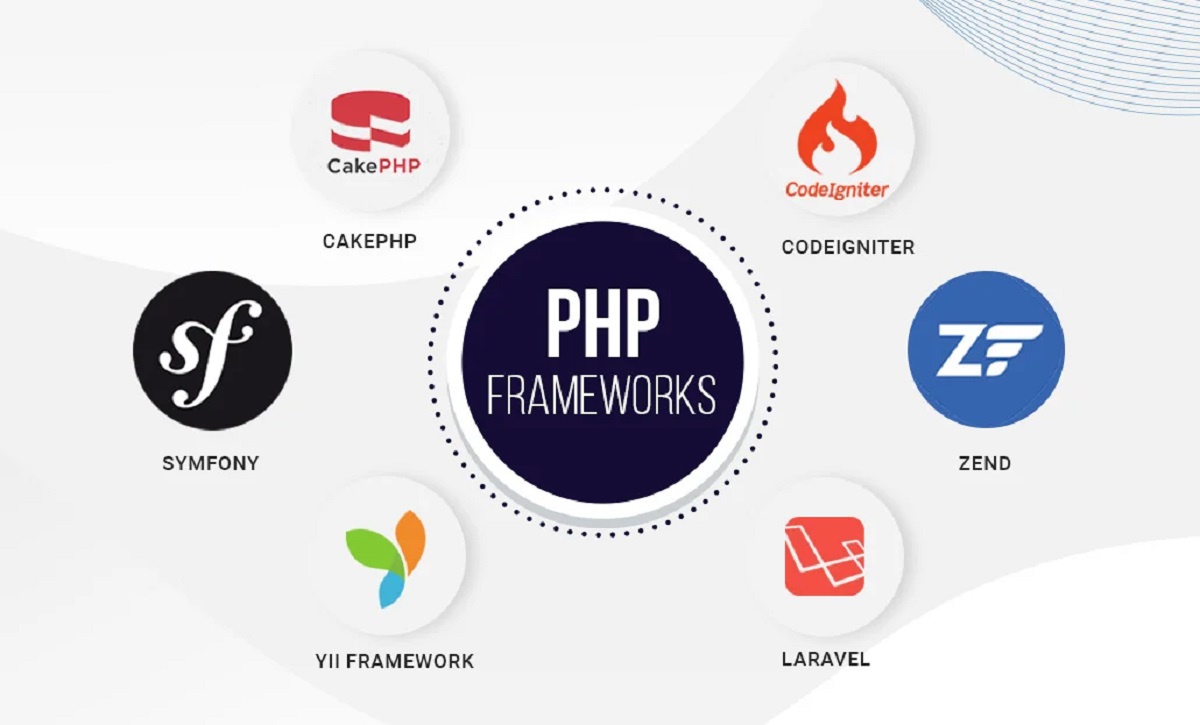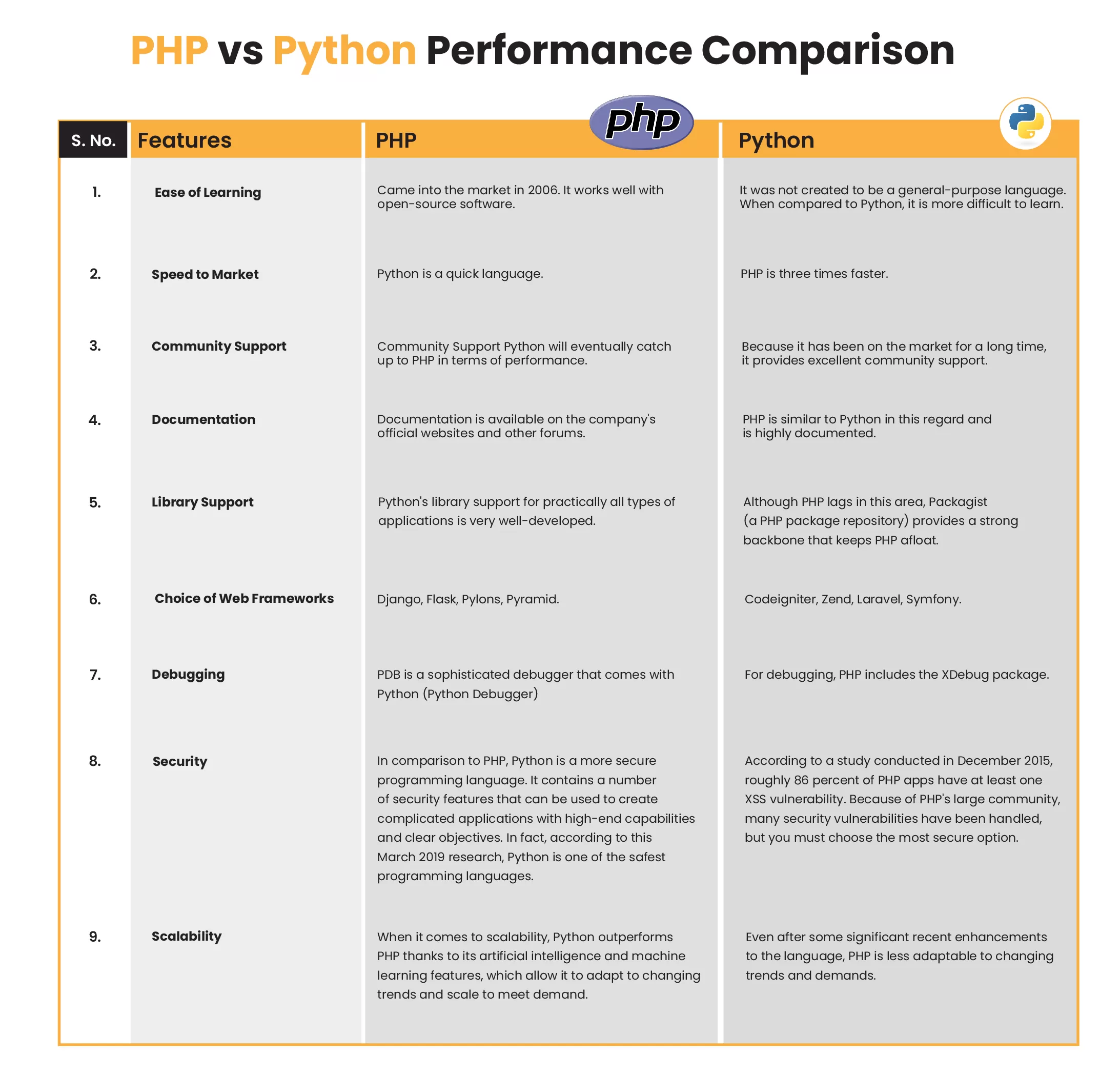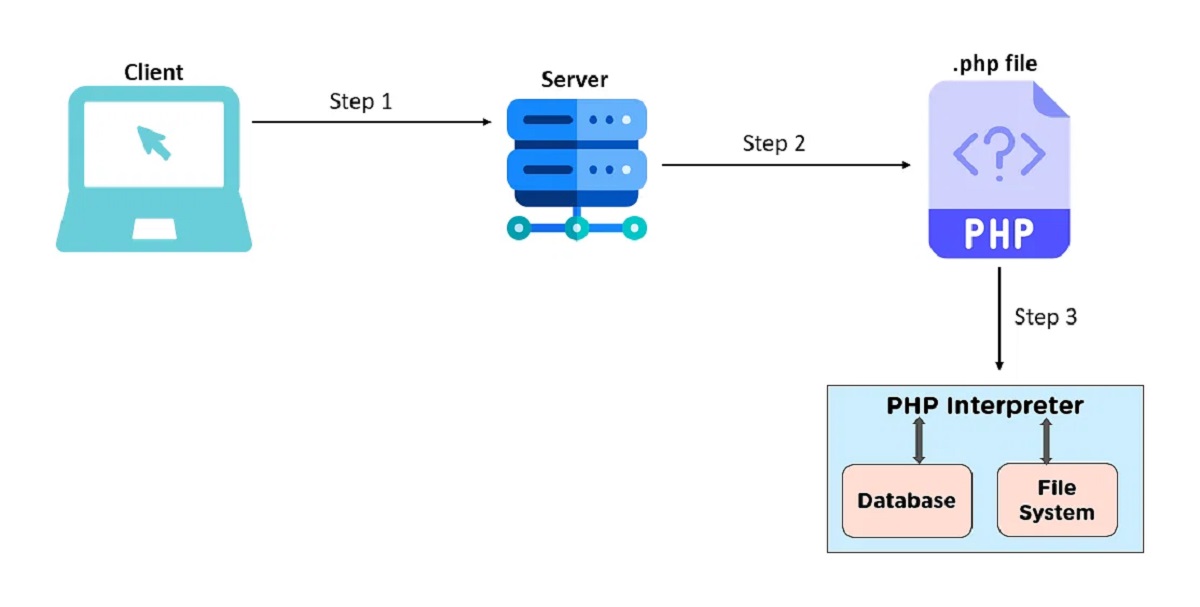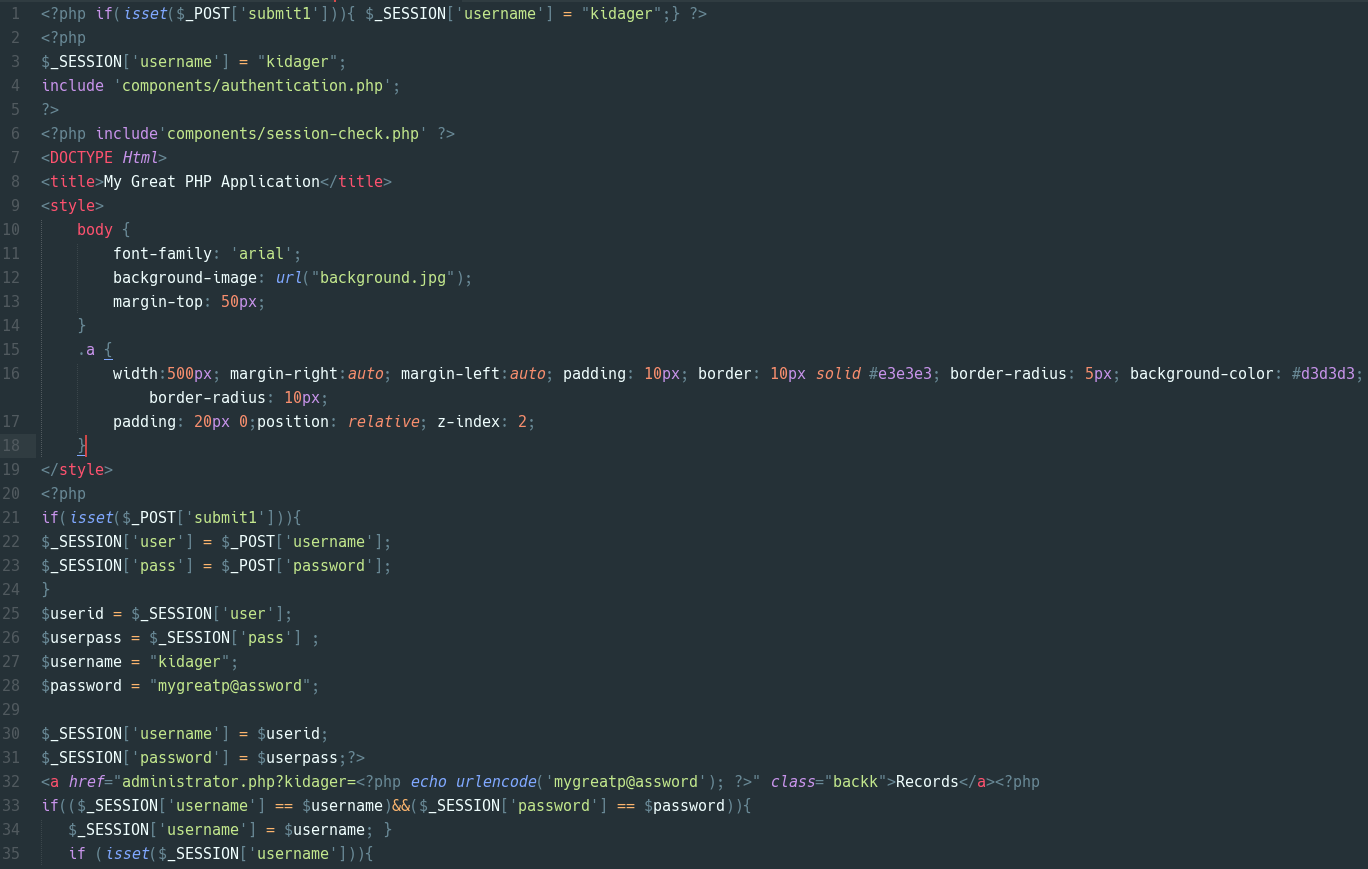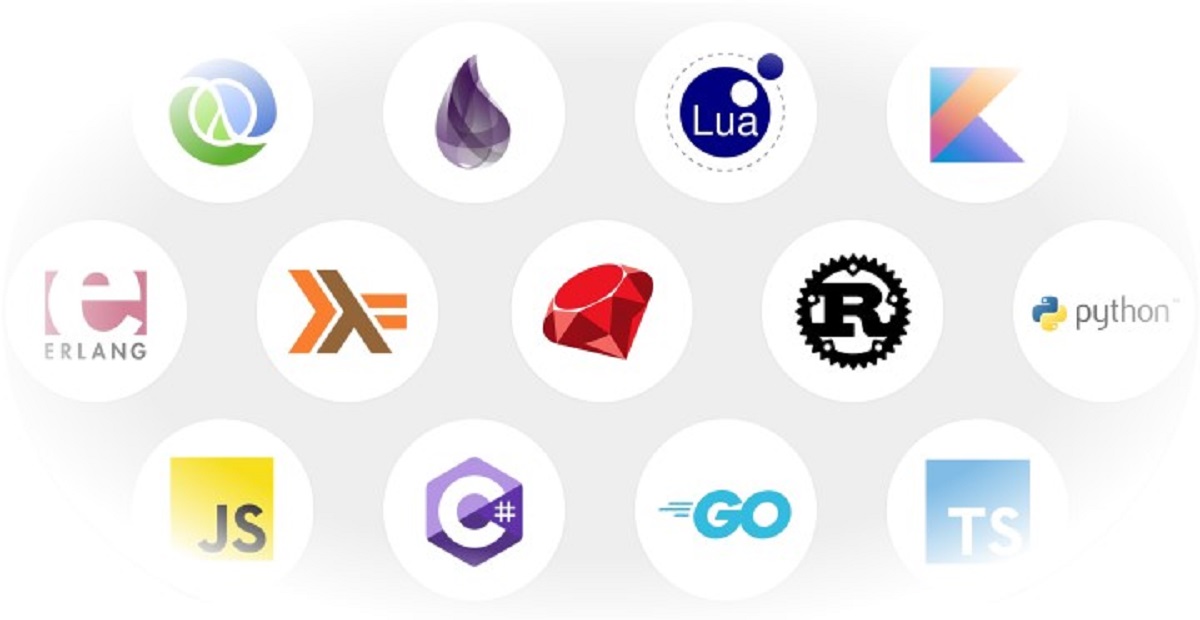Introduction
Welcome to the world of PHP Symfony! In this article, we will explore the powerful PHP framework that has gained immense popularity among developers for its flexibility, efficiency, and scalability. Whether you are a beginner or an experienced developer, Symfony offers a wide range of features and tools to build robust and high-performance web applications.
Symfony is an open-source framework that follows the Model-View-Controller (MVC) architectural pattern. It provides a set of reusable components and libraries that make development faster and more maintainable. With its emphasis on best practices, Symfony promotes code reusability, testability, and extensibility.
Developed by SensioLabs, Symfony has a rich ecosystem and boasts a vibrant community that actively contributes to its growth and improvement. This framework is used by top-notch companies and renowned websites, which further speaks to its reliability and effectiveness.
In this article, we will explore the key features of Symfony, the advantages it offers, and how to get started with Symfony development. We will also delve into the various components and bundles in Symfony, as well as the development tools that facilitate efficient coding. Lastly, we will discuss the Symfony community and the abundant resources available for developers to learn and grow.
So, whether you are a freelancer, a web development agency, or a company looking to build powerful web applications, Symfony is an excellent choice. Let’s embark on this journey into the world of Symfony and uncover the wonders this framework has in store for us.
What is PHP Symfony?
PHP Symfony is a powerful and robust framework for building web applications. It is written in PHP and follows the Model-View-Controller (MVC) architectural pattern. Symfony provides a collection of reusable components and libraries that enhance developer productivity.
At its core, Symfony aims to simplify the web development process by providing a set of tools and conventions that promote code reusability, maintainability, and scalability. With Symfony, developers can focus on writing clean and efficient code, rather than reinventing the wheel.
One of the standout features of Symfony is its flexibility. It allows developers to choose the components and tools they need, enabling them to create customized web applications according to their specific requirements. Symfony also embraces modern development practices, such as dependency injection, event-driven programming, and caching mechanisms, which contribute to the overall performance and efficiency of the applications.
Another noteworthy aspect of Symfony is its large and active community. The Symfony community consists of developers, contributors, and enthusiasts who are passionate about the framework and constantly strive to improve it. This vibrant community ensures that Symfony remains up-to-date with the latest trends and best practices, making it a reliable and future-proof choice for web development.
Furthermore, Symfony provides excellent documentation and extensive resources, making it accessible to developers of all skill levels. Whether you are a beginner or an experienced developer, Symfony offers a wealth of tutorials, guides, and forums to help you learn and master the framework.
Overall, PHP Symfony is a versatile and feature-rich framework that empowers developers to create high-quality and scalable web applications. Its flexibility, community support, and extensive resources make it a top choice for businesses and developers alike. In the next sections, we will explore the architecture, features, and advantages of Symfony, as well as how to get started with Symfony development.
Architecture of Symfony
The architecture of Symfony is based on the Model-View-Controller (MVC) design pattern, which separates the application logic into three distinct components.
Model: The model represents the data and business logic of the application. It is responsible for interacting with the database and performing operations such as data validation, retrieval, and manipulation. In Symfony, the model is implemented using entities, which are PHP classes that define the structure and behavior of the data.
View: The view is responsible for presenting the data to the user. It defines the layout, structure, and appearance of the user interface. In Symfony, views are typically implemented using templates written in Twig, a powerful and flexible templating engine. Twig provides a clear separation between the presentation and the application logic.
Controller: The controller acts as a mediator between the model and the view. It receives input from the user, processes the data, and determines the appropriate response. Controllers in Symfony are PHP classes that handle the incoming requests and invoke the necessary actions. They retrieve data from the model, prepare it for display, and pass it to the view.
The separation of these three components in the MVC pattern promotes code organization and maintainability. It enables developers to make changes to one component without affecting the others, making the application more flexible and easier to maintain.
In addition to the MVC pattern, Symfony also embraces other architectural concepts, such as dependency injection and event-driven programming. Dependency injection allows for the decoupling of components, making them more modular and testable. Event-driven programming, on the other hand, enables a highly flexible and extensible system by allowing different parts of the application to communicate and react to specific events.
Overall, the architecture of Symfony provides a solid foundation for building scalable and maintainable web applications. It promotes code reusability, separation of concerns, and adherence to best practices, making Symfony a popular choice among developers.
Features of Symfony
Symfony is packed with a plethora of features and functionalities that make it a powerful framework for web application development. Let’s explore some of its key features:
1. Reusable Components: Symfony consists of a collection of standalone and reusable components that can be used independently or combined together to create custom web applications. These components cover a wide range of functionalities such as routing, form handling, security, caching, and more.
2. Flexibility: Symfony offers great flexibility in terms of choosing the components and tools needed for a specific project. Developers can cherry-pick the components they require, enabling them to create tailored applications. This flexibility also extends to the choice of templating engine, database abstraction layer, and more.
3. High Performance: Symfony is known for its optimized and efficient code. The framework incorporates caching mechanisms, database optimization techniques, and other performance-enhancing features, resulting in faster response times and improved overall application performance.
4. Strong Security Measures: Security is a top priority in Symfony. It provides numerous security features out-of-the-box, including CSRF protection, cross-site scripting (XSS) prevention, input validation, role-based access control (RBAC), and encryption. Symfony also integrates well with popular authentication systems like OAuth and LDAP.
5. Excellent Documentation and Community Support: Symfony offers comprehensive and well-structured documentation, making it easy for developers to learn and use the framework. Additionally, Symfony has a large and active community that provides support, resources, and updates, ensuring that developers can stay up-to-date with the latest trends and best practices.
6. Testing and Debugging: Symfony provides a rich set of tools for testing and debugging applications. The framework encourages test-driven development (TDD) by providing built-in unit testing and functional testing support. Symfony also integrates with popular debugging tools like Xdebug, making the debugging process more straightforward and efficient.
7. Internationalization and Localization: Symfony has built-in support for internationalization (i18n) and localization (l10n). Developers can easily translate their applications into multiple languages and handle region-specific formats and preferences. Symfony provides translation tools, locale-specific routing, and date/time formatting utilities, making it straightforward to create multilingual applications.
These are just a few of the many features that Symfony offers. The framework continues to evolve and introduce new features with each release, ensuring that developers have the tools and capabilities they need to build modern and robust web applications.
Advantages of using Symfony
Symfony is a popular choice among developers due to the numerous advantages it offers. Let’s explore some of the key benefits of using Symfony for web application development:
1. Robust and Mature: Symfony has been around for over a decade and has evolved into a mature and stable framework. It is backed by a large community of developers who actively contribute to its development and maintenance. This ensures that Symfony is reliable, well-tested, and continuously improved.
2. Flexible and Customizable: Symfony provides a high degree of flexibility, allowing developers to choose the components and tools they need for their specific projects. This flexibility enables the creation of customized web applications that meet specific requirements, without the unnecessary overhead of unused features.
3. Scalability and Performance: Symfony is built to handle high traffic and demanding applications. It incorporates caching mechanisms, database optimization techniques, and other performance-enhancing features, resulting in fast and efficient applications. Additionally, Symfony supports horizontal scalability, allowing applications to scale seamlessly as user demand increases.
4. Code Reusability: Symfony follows a modular approach, with its reusable components making it easier to write clean and maintainable code. Developers can leverage these components across multiple projects, reducing development time and effort while ensuring consistency and quality in their applications.
5. Security: Symfony places a strong emphasis on security. It provides built-in protection against common web vulnerabilities, such as CSRF attacks and cross-site scripting (XSS). Additionally, Symfony integrates smoothly with authentication systems like OAuth and LDAP, enabling developers to implement robust security measures in their applications.
6. Excellent Documentation and Community Support: Symfony offers extensive documentation that is well-structured and regularly updated. The documentation covers all aspects of Symfony development, from installation and configuration to advanced topics. Furthermore, Symfony has a large and active community, which means ample resources, forums, and support for developers facing challenges or seeking guidance.
7. Testability and Maintainability: Symfony promotes best practices such as test-driven development (TDD), which ensures high-quality code through automated tests. With built-in support for testing and debugging, developers can easily write unit tests and functional tests for their applications, leading to improved maintainability and code stability.
These advantages make Symfony a highly regarded framework in the PHP ecosystem. Its robustness, flexibility, scalability, and focus on security contribute to faster development, improved performance, and reduced maintenance efforts, making it a preferred choice for building web applications.
Getting started with Symfony
If you’re ready to dive into Symfony and start building web applications, here are some steps to get you started:
1. Install Symfony: Begin by installing Symfony on your local development environment. Symfony provides a Command Line Interface (CLI) tool called Symfony Installer, which simplifies the installation process. You can download the Symfony Installer and follow the official documentation for detailed instructions on how to install Symfony.
2. Create a new Symfony project: Once Symfony is installed, you can create a new Symfony project using the Symfony CLI or the Composer package manager. The Symfony CLI provides a command to create a new project with the necessary boilerplate code and directory structure. Alternatively, you can use Composer to create a new project by utilizing the Symfony skeleton project template.
3. Learn the basics of Symfony: Familiarize yourself with the basic concepts of Symfony, such as routes, controllers, views, and entities. Symfony has excellent documentation available, which covers these topics in detail. Start with the official Symfony documentation or follow online tutorials to understand the fundamentals of Symfony development.
4. Explore Symfony components: Symfony is built on a collection of reusable components. Take the time to explore the available components and libraries that Symfony offers. Each component has its own documentation and examples, providing insights into its usage and capabilities. Understanding these components will help you leverage them effectively in your projects and make development more efficient.
5. Build a sample application: Once you have a grasp of the basics, start building a sample application using Symfony. Choose a simple project idea and implement it using Symfony’s features and best practices. This hands-on experience will enable you to apply the knowledge you have gained and reinforce your understanding of Symfony development.
6. Join the Symfony community: Symfony has a thriving community with experienced developers willing to help and share their knowledge. Join online forums, discussion groups, and social media channels related to Symfony. Engage with the community, ask questions, and contribute to discussions. This will provide you with valuable insights, tips, and support as you continue your Symfony journey.
7. Keep learning and refining your skills: Symfony constantly evolves, introducing new features and improvements with each release. Stay up-to-date with the latest Symfony developments by following the official Symfony blog, attending Symfony conferences, and exploring the abundant resources available online. Continuously improving your Symfony skills will enable you to build more efficient, maintainable, and innovative web applications.
By following these steps, you will be well on your way to becoming proficient in Symfony development. Remember, practice, experimentation, and active participation in the Symfony community are key to mastering this powerful framework.
Components of Symfony
Symfony is built on a collection of standalone and reusable components, which provide a wide range of functionalities for web application development. Let’s take a closer look at some of the key components that make up Symfony:
1. Symfony Console: The Symfony Console component provides a powerful tool for building command-line interfaces (CLIs) in PHP. It allows developers to create, configure, and execute console commands, making it easier to build command-line utilities and automate tasks.
2. Symfony Routing: The Symfony Routing component handles the routing of incoming requests to the appropriate controllers. It supports various routing methods, including pattern matching, parameter extraction, and route generation. Symfony Routing simplifies the management of complex routing configurations and enables clean URLs for web applications.
3. Symfony Form: The Symfony Form component provides a flexible and reusable system for handling HTML form creation, rendering, and validation. It allows developers to define form fields, handle form submission, and handle data binding to objects. Symfony Form makes form handling easier, more secure, and more maintainable.
4. Symfony Security: The Symfony Security component offers tools and features to handle authentication, authorization, and other security-related tasks. It provides a robust and flexible authentication system, role-based access control, CSRF protection, and encryption capabilities. Symfony Security helps developers build secure web applications with ease.
5. Symfony Validator: The Symfony Validator component provides a comprehensive set of validation rules and constraints for data validation. It allows developers to validate user input and ensure that data meets specific criteria. Symfony Validator offers a wide range of built-in validation rules and supports custom validation constraints.
6. Symfony Translation: The Symfony Translation component facilitates the translation of application messages and content into different languages. It provides tools and features to manage translation catalogs, extract translation strings, and handle locale-specific translations. Symfony Translation simplifies the process of creating multilingual applications.
7. Symfony Cache: The Symfony Cache component allows developers to implement various caching techniques to improve application performance. It supports different storage backends, including file-based caching, in-memory caching, and database caching. Symfony Cache provides a simple and efficient way to cache data, query results, and rendered views.
These are just a few examples of the many components available in Symfony. Other notable components include the Event Dispatcher, HttpFoundation, Serializer, and many more. Each component can be used independently or combined to build powerful and scalable web applications.
By leveraging these components, developers can benefit from the reusable and tested functionality provided by Symfony, resulting in faster development, increased code quality, and easier maintenance of web applications.
Bundles in Symfony
Bundles are a key concept in Symfony that enhance the functionality and modularity of web applications. A bundle in Symfony is a standalone package that contains reusable code, configuration files, templates, and other resources. Bundles allow developers to easily extend and customize Symfony applications by adding or removing specific features.
1. Symfony Standard Edition Bundle: The Symfony Standard Edition bundle is the default bundle that comes with every new Symfony project. It provides a solid foundation for building web applications, including essential features such as routing, authentication, security, and templating. This bundle embodies Symfony’s best practices and offers a starting point for developers to build upon.
2. DoctrineBundle: The DoctrineBundle integrates the powerful Doctrine ORM (Object-Relational Mapping) with Symfony. It provides seamless database integration, allowing developers to map database tables to PHP objects and perform database operations using object-oriented syntax. The DoctrineBundle simplifies database interactions and ensures efficient database management in Symfony applications.
3. TwigBundle: The TwigBundle integrates the Twig template engine with Symfony. Twig is a flexible and efficient templating engine that separates presentation logic from application logic. The TwigBundle enables developers to use Twig templates to generate dynamic and visually appealing HTML views. Twig’s intuitive syntax and extensive features make it a popular choice for Symfony projects.
4. SecurityBundle: The SecurityBundle provides a comprehensive framework for managing authentication and authorization in Symfony applications. It allows developers to secure routes, control access to resources, and configure authentication providers. The SecurityBundle simplifies user authentication processes and ensures robust security measures in Symfony applications.
5. SwiftMailerBundle: The SwiftMailerBundle integrates the SwiftMailer library with Symfony, enabling developers to send emails easily. SwiftMailer is a powerful and feature-rich library that supports various email transports and provides a simple API for email composition and delivery. The SwiftMailerBundle simplifies the process of sending emails and managing email templates in Symfony applications.
6. FOSUserBundle: The FOSUserBundle is a popular third-party bundle that provides user management features for Symfony. It offers a flexible and extensible user system, including registration, login, password reset, and profile management functionalities. The FOSUserBundle saves developers time and effort by handling common user-related tasks and allowing for easy customization.
7. SonataAdminBundle: The SonataAdminBundle simplifies the creation of powerful and customizable administration interfaces in Symfony applications. It provides a backend interface for managing entities and allows developers to define custom dashboard pages, CRUD (Create, Read, Update, Delete) operations, and other administrative features. The SonataAdminBundle makes it easy to build complex administration panels with minimal effort.
These are just a few examples of the many bundles available in Symfony. Bundles greatly enhance modular development, promote code reusability, and speed up the development process. Developers can leverage existing bundles or create their own custom bundles to extend and customize Symfony applications according to their specific requirements.
Symfony Development Tools
Symfony provides a wide range of development tools that simplify and enhance the process of building web applications. These tools offer various features, from code generation and debugging to testing and profiling. Let’s explore some of the essential Symfony development tools:
1. Symfony CLI: The Symfony Command Line Interface (CLI) tool is an indispensable tool for Symfony development. It provides a set of commands that streamline common development tasks, such as creating new projects, generating code skeletons, managing dependencies, running tests, and more. The Symfony CLI simplifies repetitive tasks and boosts developer productivity.
2. Composer: Composer is a dependency management tool for PHP that is widely used in the Symfony ecosystem. It allows developers to define and manage project dependencies, ensuring that the required libraries and components are installed correctly. Composer also enables the autoloading of classes and provides a straightforward mechanism for including third-party packages in Symfony projects.
3. Twig Templating Engine: Twig is the default templating engine in Symfony, and it offers powerful features and a clean syntax for generating dynamic views. Twig provides support for template inheritance, macros, filters, and functions, making it easy to create reusable and maintainable templates. The Twig debugging feature also helps identify template errors and performance bottlenecks.
4. Symfony Debug Toolbar and Profiler: The Symfony Debug Toolbar and Profiler are essential tools for debugging and optimizing Symfony applications. The Debug Toolbar displays useful information about executed SQL queries, performance metrics, HTTP requests, and much more. Additionally, the Profiler provides detailed insights into the internal workings of the application, including memory usage, event listeners, and executed code.
5. Symfony PHPUnit Bridge: Symfony tightly integrates with PHPUnit, a popular testing framework for PHP. The Symfony PHPUnit Bridge provides seamless integration of PHPUnit tests into Symfony projects. It offers special assertions for testing Symfony-specific features, such as routing, forms, security, and other Symfony components. The Symfony PHPUnit Bridge simplifies the process of writing and executing tests for Symfony applications.
6. Symfony MakerBundle: The Symfony MakerBundle is a powerful code generation tool that speeds up the development process. It provides a set of generators for creating common elements, such as controllers, entities, form types, migrations, and more. The MakerBundle automates repetitive tasks and ensures consistent code structure and quality.
7. Symfony WebProfilerBundle: The WebProfilerBundle is an optional bundle that adds even more debugging and profiling capabilities to Symfony applications. It integrates with the Debug Toolbar and Profiler, offering additional panels for inspecting routes, services, configuration, and more. The WebProfilerBundle is an invaluable tool for troubleshooting issues and optimizing Symfony applications.
These are just a few examples of the many development tools available in Symfony. Whether you’re a beginner or an experienced Symfony developer, leveraging these tools will enhance your productivity, aid in debugging, and streamline the development process. Familiarize yourself with these tools and explore additional Symfony extensions and plugins that can further enhance your development workflow.
Symfony Community and Resources
The Symfony framework has a vibrant and supportive community that plays a crucial role in its growth and success. The community consists of developers, contributors, enthusiasts, and companies who are passionate about Symfony and actively contribute to its improvement. Let’s explore the Symfony community and the valuable resources it offers:
1. Symfony Website and Documentation: The official Symfony website is a central hub that provides comprehensive documentation, tutorials, guides, and references. The documentation covers all aspects of Symfony development, from installation and configuration to advanced topics and best practices. The Symfony website is constantly updated, ensuring that developers have access to the latest information and resources.
2. Symfony Blog and Newsletters: The Symfony team maintains an official blog where they regularly share updates, announcements, and insights about Symfony. The blog provides valuable information about new features, releases, and upcoming events. Symfony also offers newsletters that deliver important updates directly to your inbox, allowing you to stay up-to-date with the latest Symfony news.
3. SymfonyCon and Conferences: SymfonyCon is the official annual Symfony conference. It brings together Symfony developers, experts, and enthusiasts from around the world. SymfonyCon offers an opportunity to learn from industry experts, attend workshops, and network with fellow developers. In addition to SymfonyCon, there are also several local Symfony conferences and meetups held worldwide, providing opportunities for knowledge sharing and networking.
4. Symfony Community Forum and Mailing Lists: The Symfony community forum and mailing lists serve as platforms for developers to engage in discussions, ask questions, and seek guidance. These platforms are a great place to find solutions to common issues, share experiences, and connect with other Symfony developers. The community forum and mailing lists embrace an inclusive and supportive environment.
5. Symfony GitHub Repository: Symfony has an active GitHub repository where developers can find the source code, raise issues, and submit pull requests. The GitHub repository also contains a wealth of additional Symfony extensions, bundles, and plugins developed by the community. Contributing to the Symfony codebase through GitHub is a fantastic way to get involved and give back to the community.
6. Symfony Certification and Training: Symfony offers official certification programs that allow developers to validate their Symfony skills and expertise. Becoming a certified Symfony developer demonstrates your proficiency in the framework and can boost your career prospects. Symfony also provides training and workshops for developers at various skill levels, offering the opportunity to learn from experienced Symfony trainers.
7. Social Media and Online Communities: Symfony maintains an active presence on various social media platforms, including Facebook, Twitter, and LinkedIn. Following Symfony on social media keeps you informed about the latest news, updates, and community activities. There are also online communities and forums, such as Symfony groups on Facebook and Reddit, where you can connect with other Symfony developers, share insights, and seek advice.
The Symfony community and the wealth of resources available create an environment that encourages learning, collaboration, and growth. Whether you’re a beginner or an experienced Symfony developer, engaging with the Symfony community and leveraging the available resources will greatly enhance your Symfony journey.
Conclusion
Symfony is a powerful PHP framework that empowers developers to build scalable, maintainable, and high-performance web applications. With its modular architecture, reusable components, and extensive community support, Symfony has become a popular choice among developers worldwide.
In this article, we covered the basics of Symfony, exploring its architecture, key features, and advantages. We also discussed the essential Symfony development tools and the vibrant Symfony community that provides valuable resources and support.
Whether you are new to Symfony or an experienced developer, Symfony offers a wealth of documentation, tutorials, and forums that facilitate learning and growth. From the Symfony CLI and Twig templating engine to the Doctrine ORM and SecurityBundle, Symfony provides a powerful toolkit to simplify development tasks and ensure code quality.
The Symfony community plays a vital role in the framework’s success, providing a supportive environment for knowledge sharing, collaboration, and innovation. With regular updates, conferences, and certification programs, Symfony continues to evolve and remain at the forefront of the PHP ecosystem.
As you embark on your Symfony journey, remember to leverage the extensive resources available, from the official Symfony documentation to the active community forums and social media platforms. Engage with fellow Symfony developers, attend SymfonyCon, and contribute to the Symfony ecosystem. By doing so, you can enhance your skills, stay up-to-date with the latest trends, and make valuable connections.
Whether you are building small projects or large enterprise applications, Symfony provides a robust and flexible framework that empowers you to create exceptional web experiences. With its user-friendly syntax, extensive components, and powerful development tools, Symfony is your gateway to efficient and successful web application development.







